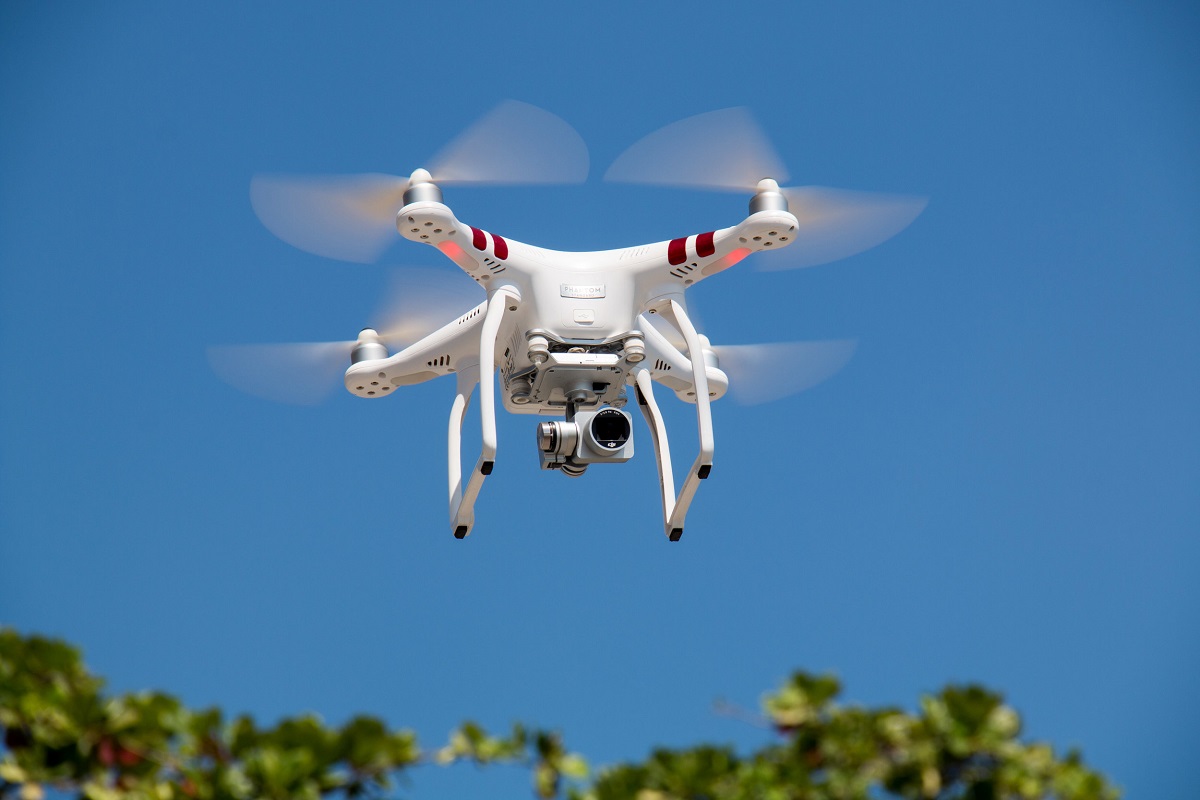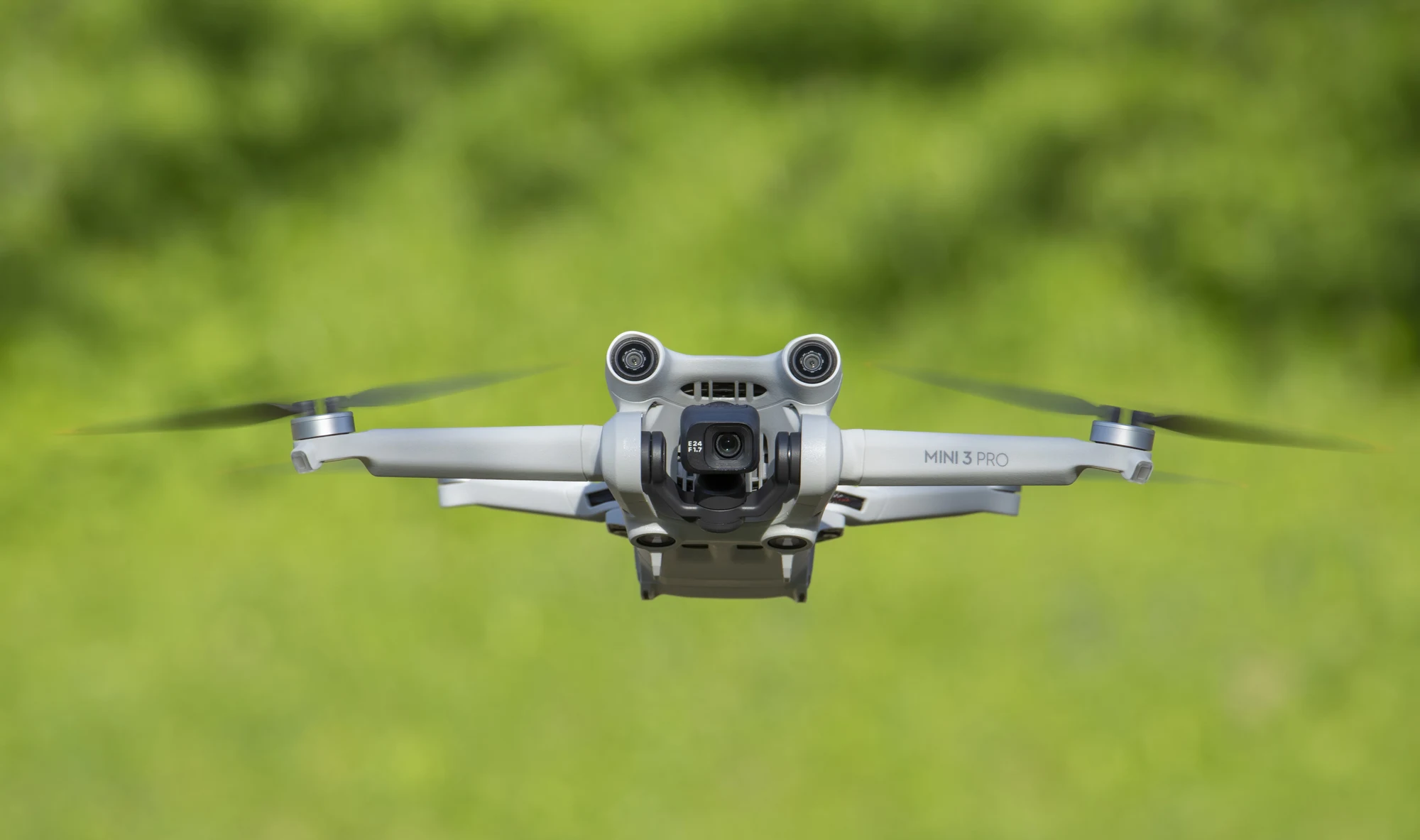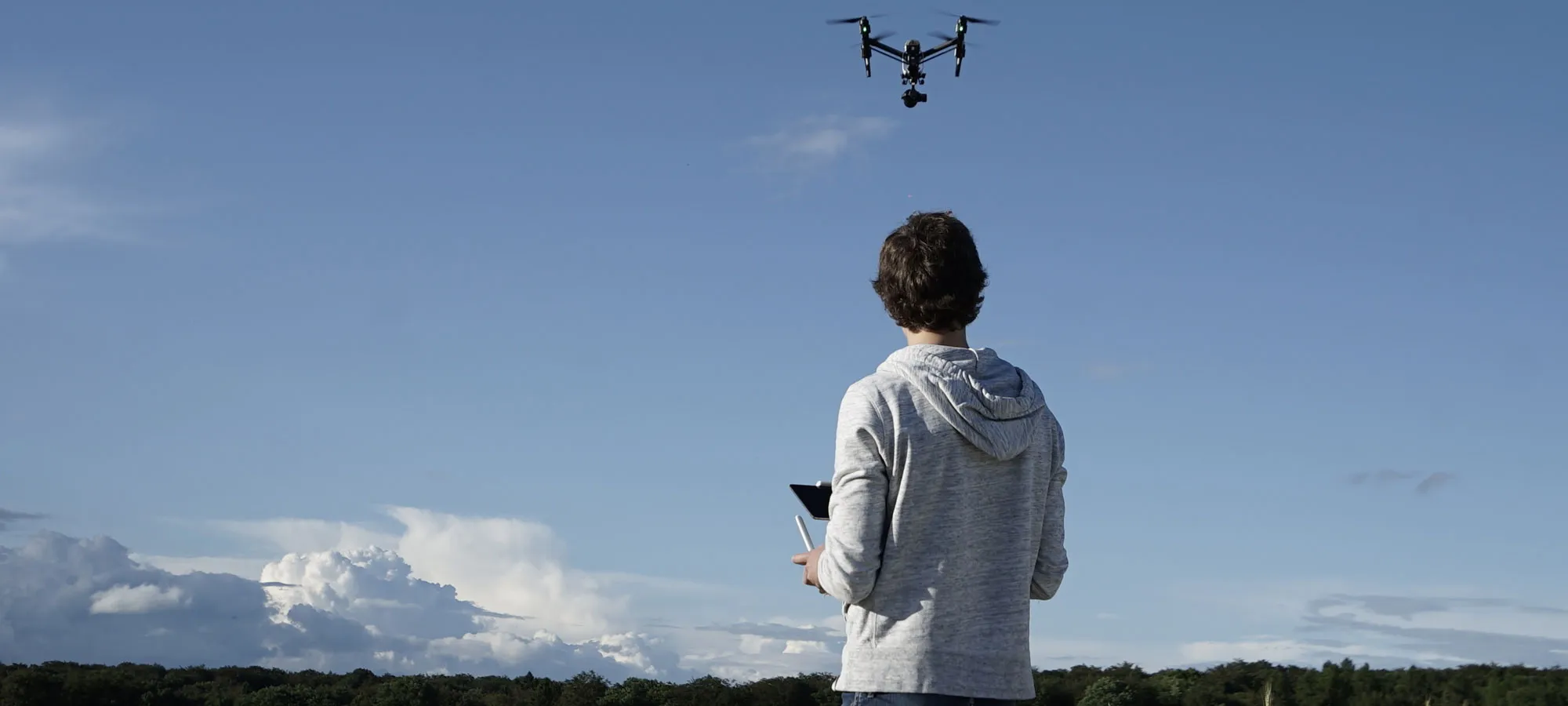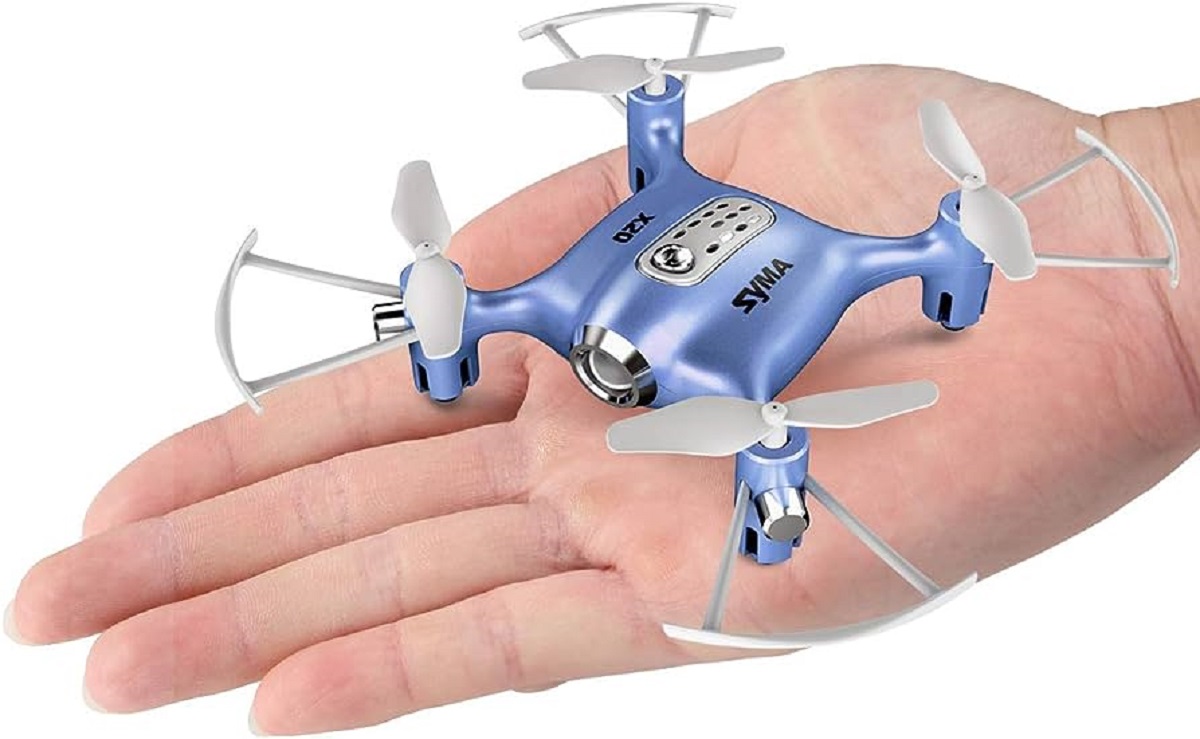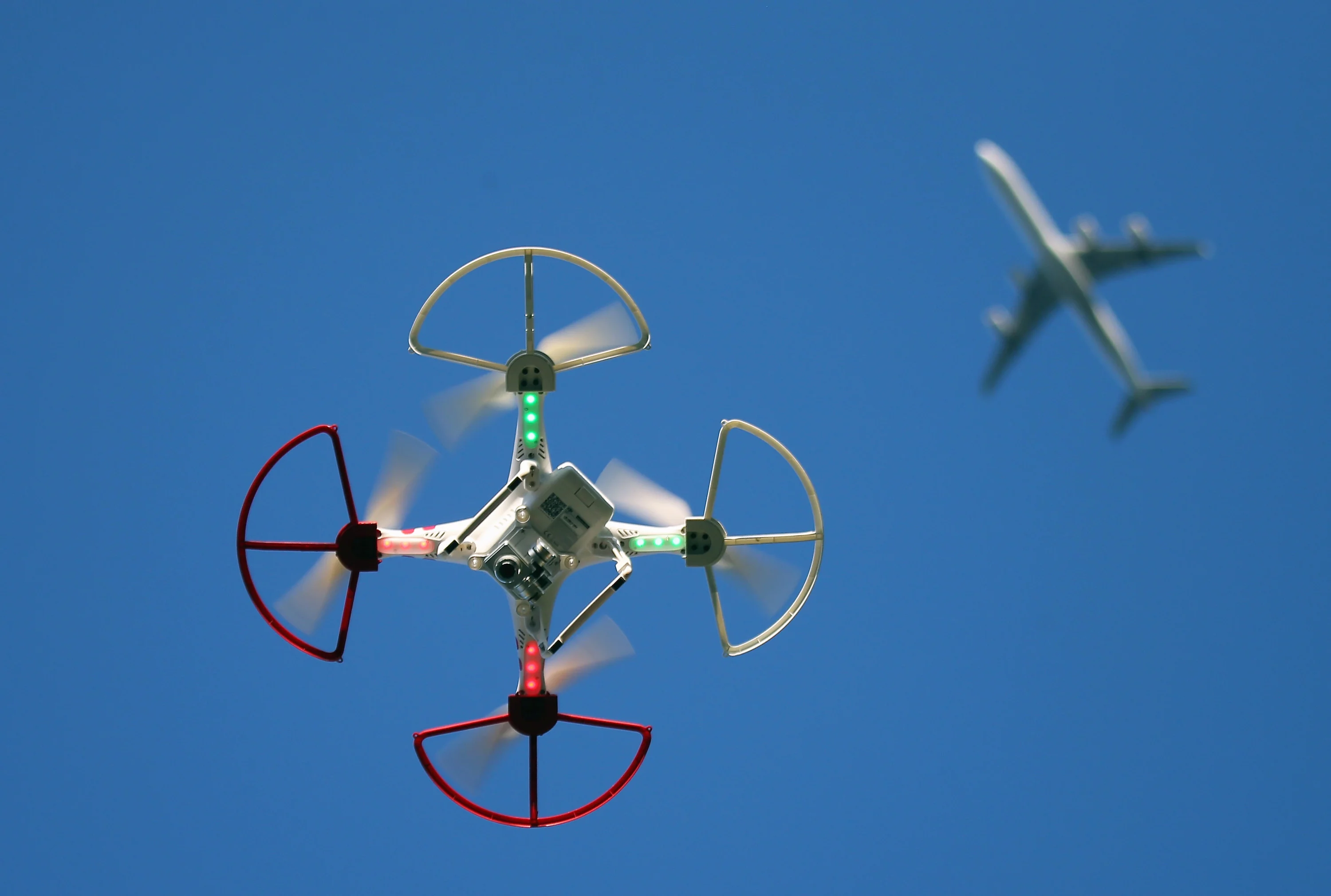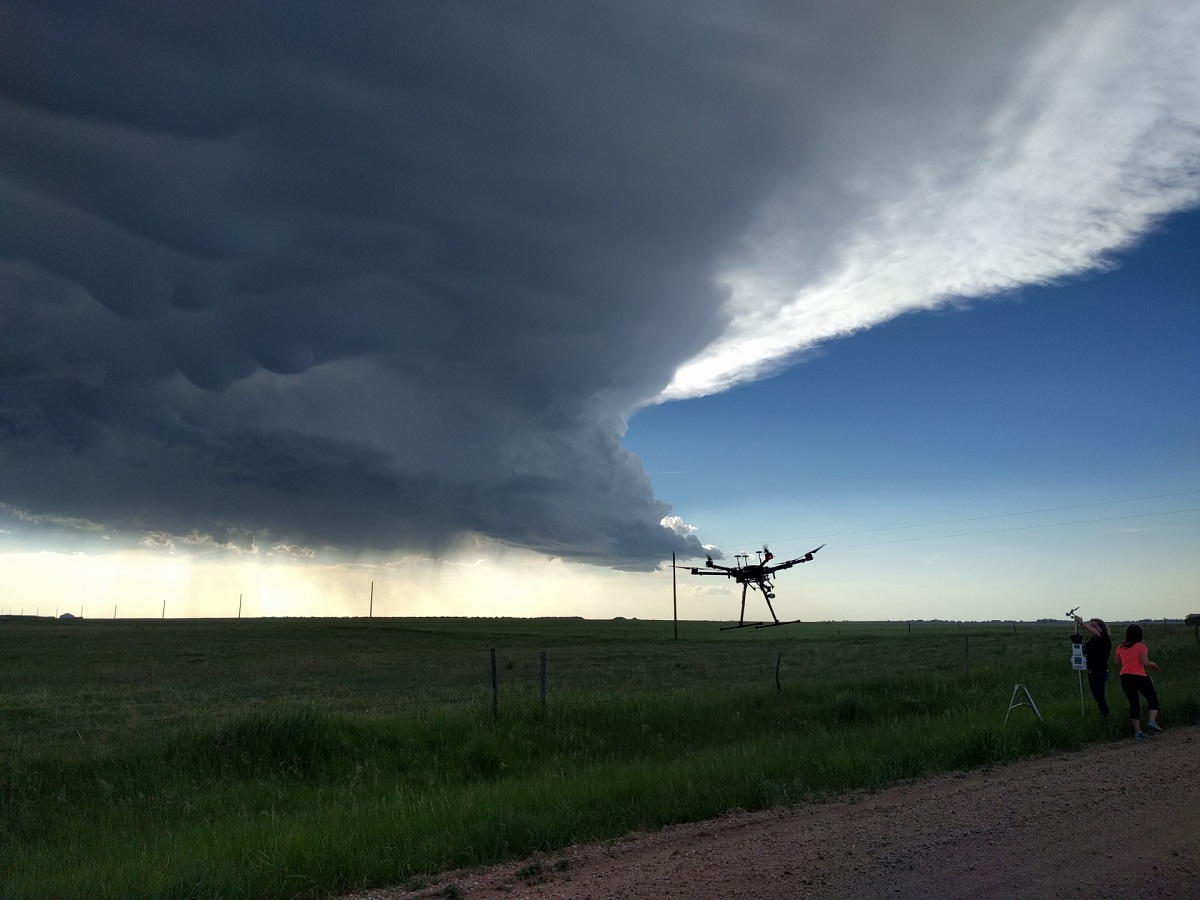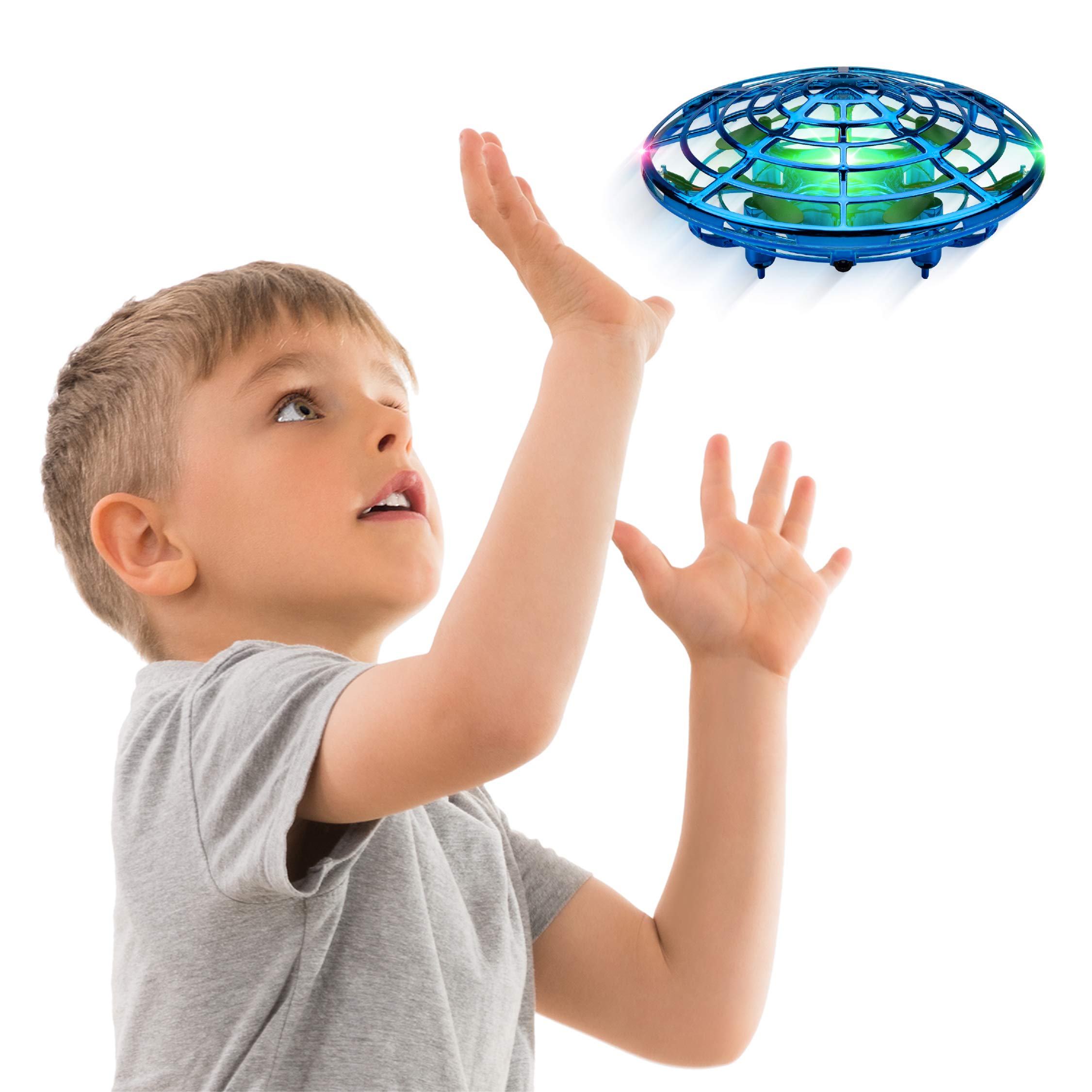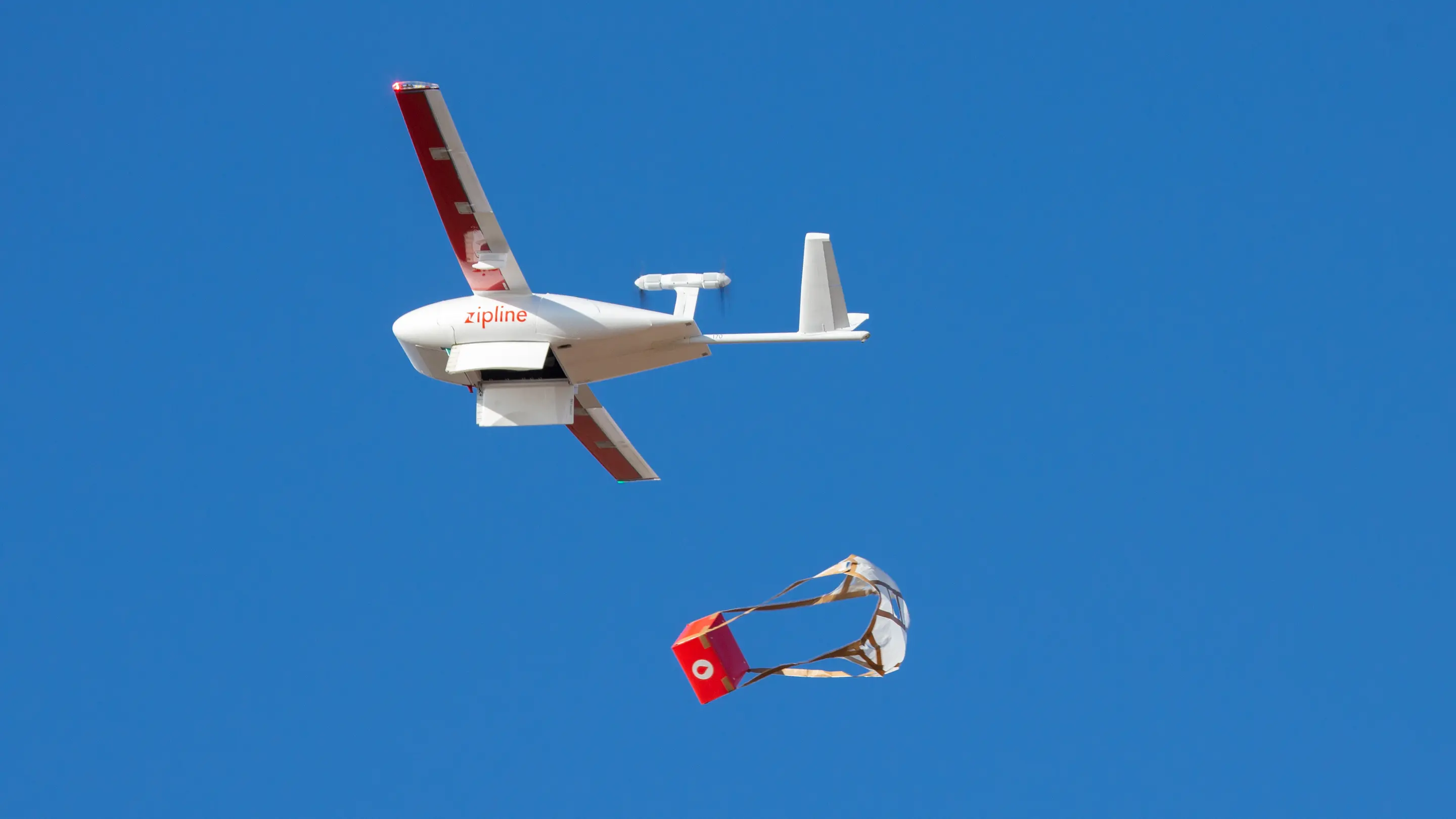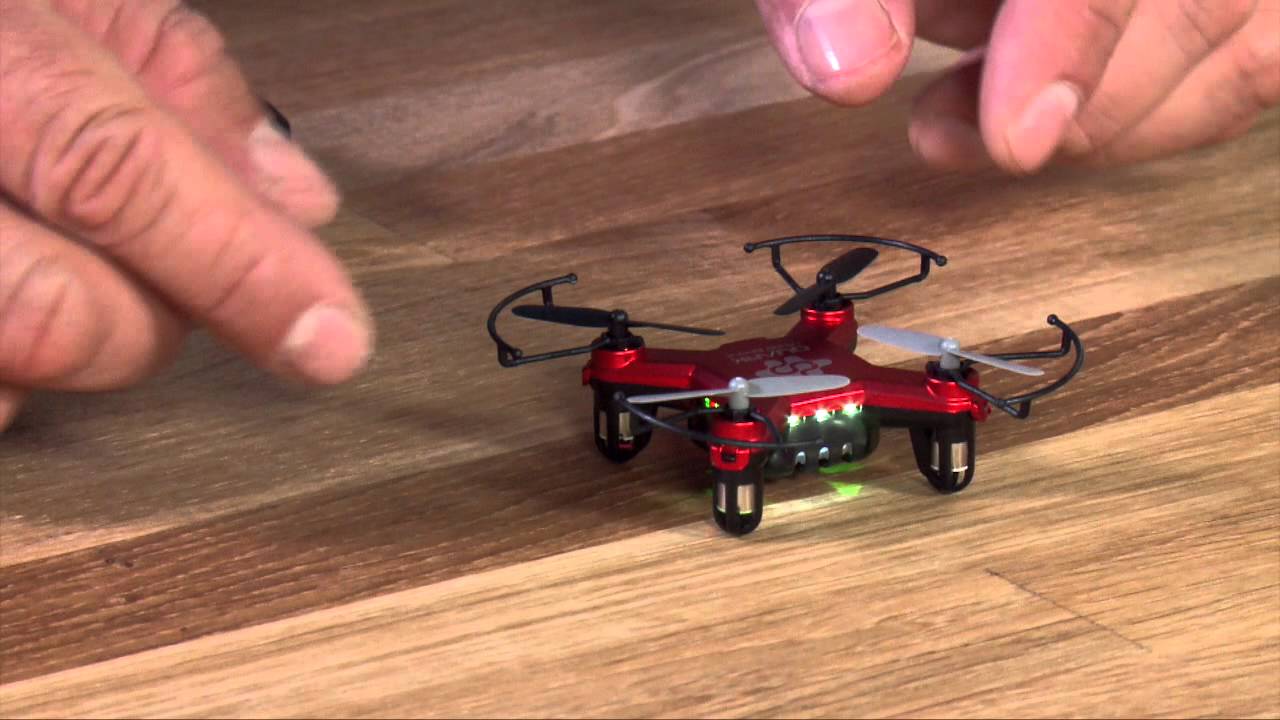Introduction
Drones, also known as unmanned aerial vehicles (UAVs), have gained immense popularity in recent years. These flying devices have opened up new possibilities, from aerial photography and videography to surveillance and package delivery. However, it’s crucial to understand where you are allowed to fly a drone to ensure compliance with local regulations and maintain the safety and privacy of others. In this article, we will explore the regulations and restrictions associated with flying drones in various locations.
The National Airspace System (NAS) is a complex network of airspace that encompasses the airspace over the United States, including its territories and waters. The Federal Aviation Administration (FAA) is responsible for regulating the use of this airspace. It has established guidelines and restrictions to ensure the safe and efficient operation of aircraft, including drones.
The NAS is divided into different classes of airspace: Class A, Class B, Class C, Class D, Class E, and Class G. Each class has its own specific rules and restrictions for drone operations. Understanding these classes is essential for any drone pilot to navigate the airspace safely.
Restricted areas are designated airspace where drone operations may be prohibited or restricted for various reasons, such as military operations or national security concerns. These areas are clearly marked on aeronautical charts and should be avoided by drone operators at all times.
Prohibited areas are similar to restricted areas but with stricter restrictions. These areas typically include sensitive locations like government buildings, power plants, or national landmarks. Drone operations are strictly prohibited within these areas.
Military Operations Areas (MOAs) are airspace regions where military training activities, such as conducting aerial maneuvers or aircraft weapons testing, take place. Drone operators should avoid flying in or near MOAs to ensure they don’t interfere with military operations.
Temporary Flight Restrictions (TFRs) are temporary restrictions imposed by the FAA due to special events, emergencies, or hazardous conditions. Drone pilots must always check for TFRs in their intended flight area and comply with any imposed restrictions.
Controlled airports are those that have an operating air traffic control tower. Drone operators are generally not allowed to fly within 5 miles of a controlled airport without obtaining proper authorization from air traffic control. This ensures the safety of manned aircraft taking off and landing at these airports.
Uncontrolled airports, on the other hand, don’t have air traffic control towers. However, it is still crucial to exercise caution and follow FAA guidelines when flying drones near uncontrolled airports to avoid interfering with any incoming or outgoing aircraft.
National Airspace System
The National Airspace System (NAS) is a comprehensive network of airspace that covers the entire United States and its outlying territories. It provides the infrastructure for the safe and efficient operation of all aircraft, including drones. The Federal Aviation Administration (FAA) is the government body responsible for managing and regulating the NAS.
The NAS is categorized into different classes of airspace, each with its own set of rules and restrictions. These classes include Class A, Class B, Class C, Class D, Class E, and Class G airspace. Understanding the characteristics and limitations of each class is crucial for drone operators to ensure safe and legal flights.
Class A airspace primarily covers altitudes above 18,000 feet and is typically reserved for commercial airliners and other large aircraft. Drone operations are not permitted in Class A airspace without express authorization from the FAA.
Class B airspace surrounds busy airports and major metropolitan areas. It is controlled by air traffic control and is typically characterized by more stringent regulations and restrictions. Drone operations in Class B airspace require prior authorization from the FAA.
Class C airspace is designated around airports with moderate to high air traffic volume. Similar to Class B airspace, Class C airspace is controlled by air traffic control and requires authorization for drone flights.
Class D airspace covers the airspace surrounding smaller airports with control towers. Operations in Class D airspace require prior authorization from air traffic control.
Class E airspace encompasses the remaining controlled airspace that is not classified as A, B, C, or D. Drone operations in Class E airspace generally do not require authorization unless stated otherwise by specific regulations or local authorities.
Class G airspace refers to uncontrolled airspace, typically found in rural or sparsely populated areas. While drone operations in Class G airspace do not require prior authorization, it is still essential to comply with general FAA guidelines to ensure the safety of both the drone and other aircraft.
Navigating the NAS can be a complex task, especially for drone pilots who may not have prior aviation knowledge. However, it is crucial to familiarize yourself with the different classes of airspace and their associated regulations to ensure safe and legal drone flights.
Federal Aviation Administration (FAA) Regulations
The Federal Aviation Administration (FAA) is the regulatory body that oversees the operation of drones in the United States. To ensure the safety and integrity of the National Airspace System (NAS), the FAA has established specific regulations and guidelines for drone operators to follow.
One of the most important regulations set by the FAA is the requirement for drone pilots to register their aircraft. All drones weighing between 0.55 pounds (250 grams) and 55 pounds (25 kilograms) must be registered with the FAA before flying them outdoors. This registration helps the FAA keep track of drones and enables them to educate pilots about safety guidelines and notify them of any changes in regulations.
The FAA has also established rules regarding where and when drones can be flown. For recreational drone pilots, drones must be operated within visual line of sight of the operator. They should not be flown higher than 400 feet above ground level and should stay away from other aircraft and airports. Additionally, recreational drone pilots should avoid flying over groups of people, stadiums, and sporting events.
Commercial drone operations have more stringent requirements. Drone operators must obtain a Remote Pilot Certificate by passing an FAA knowledge test. Commercial drones are also subject to specific operational limitations, such as flying during daylight hours and operating within specific airspace restrictions.
To enhance safety and avoid unauthorized drone operations, the FAA has implemented a system called LAANC (Low Altitude Authorization and Notification Capability). LAANC allows drone pilots to obtain near-instantaneous authorization to fly in controlled airspace through an automated system. This streamlines the process of obtaining necessary permission, ensuring compliance with airspace regulations.
It’s essential for all drone operators to stay up to date with the FAA regulations, as they are continuously evolving to adapt to the growing drone industry and address safety concerns. Ignorance of the rules is not an excuse, and failure to comply with FAA regulations can result in fines, penalties, and even criminal charges.
By adhering to the regulations and guidelines set forth by the FAA, drone operators can contribute to the safe and responsible integration of drones into the National Airspace System.
Classes of Airspace
The National Airspace System (NAS) is divided into different classes of airspace, each with its own set of rules and restrictions. Understanding these classes is crucial for drone pilots to navigate the airspace safely and legally. Let’s explore the various classes of airspace in more detail.
Class A airspace is primarily reserved for commercial airliners and other large aircraft that operate at high altitudes above 18,000 feet. This airspace is typically controlled by air traffic control and is not accessible to drones without express authorization from the Federal Aviation Administration (FAA).
Class B airspace surrounds busy airports and major metropolitan areas. It is highly regulated and typically extends from the surface up to a certain altitude. Air traffic control actively manages this airspace to ensure the safe and efficient flow of air traffic. Drone operations within Class B airspace require prior authorization from the FAA due to the high volume of manned aircraft.
Class C airspace is designated around airports with moderate to high air traffic volume. This airspace extends from the surface up to a certain altitude and has controlled airspace requirements. Similar to Class B airspace, drone operators must obtain authorization from the FAA before flying in Class C airspace to ensure the safety of both the drone and manned aircraft.
Class D airspace encompasses airspace surrounding smaller airports with control towers. This airspace usually extends from the surface up to a certain altitude and requires prior authorization from air traffic control for drone operations. It’s essential to communicate with air traffic control and receive clearance before flying in Class D airspace to avoid conflicts with manned aircraft.
Class E airspace covers the remaining controlled airspace that is not classified as A, B, C, or D. This airspace is usually found above designated altitudes and doesn’t require specific authorization for drone operations, unless otherwise stated by specific regulations or local authorities. However, it is still crucial for drone pilots to exercise caution and comply with general FAA guidelines when operating in Class E airspace.
Class G airspace refers to uncontrolled airspace, typically found in rural or sparsely populated areas. It extends from the surface up to the base of controlled airspace, which is usually the bottom of Class E airspace. Drone operations in Class G airspace do not require prior authorization from the FAA. However, it’s important to maintain visual line of sight of the drone and comply with general aviation regulations to ensure safe and responsible flights.
Understanding the different classes of airspace is vital for drone pilots to plan their flights and avoid unauthorized operations. By adhering to the regulations associated with each class of airspace, drone operators can contribute to the safety and integrity of the National Airspace System.
Restricted Areas
Restricted areas are designated airspace where drone operations may be prohibited or restricted for various reasons. These areas typically have specific security or safety concerns that warrant restricted access. As a responsible drone pilot, it’s essential to understand and respect these restrictions to ensure compliance with aviation regulations and maintain the safety of both your drone and others. Let’s delve into restricted areas in more detail.
Restricted areas are clearly marked on aeronautical charts and are typically associated with military installations, government facilities, or other sensitive locations. These areas are established to protect the integrity of these sites and prevent unauthorized access or interference. As such, drone operations are generally prohibited within restricted areas.
One notable example of a restricted area is the White House in Washington, D.C. Flying a drone within the vicinity of the White House is strictly prohibited due to security concerns. Violating these restrictions can lead to severe penalties and legal consequences.
It’s important to note that restricted areas can vary in terms of their size and dimensions. Some restricted areas extend vertically, from ground level to a certain altitude, while others may cover a specific radius on the ground. It’s essential to research and familiarize yourself with the boundaries of restricted areas before planning a drone flight in the vicinity.
In some cases, restricted areas may have temporary restrictions imposed by the FAA due to specific events or emergencies. These temporary flight restrictions (TFRs) are put in place to ensure airspace security or safety during critical situations. Drone pilots must check for TFRs in their intended flight area and comply with any imposed restrictions. Ignoring TFRs can lead to severe consequences, as they are typically enforced with rigor.
It’s important to remember that restricted areas are established for valid reasons, and it’s the responsibility of drone pilots to respect these restrictions. Be sure to research and stay updated on the restricted areas in your area of operation to ensure safe and legal drone flights. Understanding and adhering to these restrictions contributes to the overall safety and security of the National Airspace System.
Prohibited Areas
Prohibited areas are airspace regions where drone operations are strictly prohibited. These areas typically include locations of significant importance or sensitivity, such as government buildings, power plants, or national landmarks. It is critical for drone pilots to be aware of these prohibited areas to ensure compliance with regulations and to avoid compromising the safety and security of these sites. Let’s explore prohibited areas in more detail.
Prohibited areas are established to safeguard critical infrastructure, national security, or the privacy of individuals. These areas have strict no-fly policies, meaning that drone operations within these airspace regions are illegal and subject to severe penalties and legal consequences.
Examples of prohibited areas include the airspace surrounding the Pentagon, nuclear power plants, or sensitive government facilities. These sites have heightened security measures in place to prevent unauthorized access and potential threats. Flying a drone near or above these prohibited areas can be considered a breach of security and can result in serious repercussions.
It’s important to note that prohibited areas can vary in size and can extend both vertically and horizontally. Some prohibited areas only cover a specific radius on the ground, while others have more extensive airspace restrictions. Drone pilots must research and understand the boundaries of these prohibited areas before planning any flights in specific regions.
Additionally, it’s crucial to stay updated on temporary flight restrictions (TFRs) that may be imposed by the Federal Aviation Administration (FAA) in specific areas. TFRs are temporary restrictions put in place due to special events, emergencies, or hazardous conditions. These can include airspace restrictions for public gatherings, forest fires, or other critical situations. Pilots must always check for TFRs in their intended flight area and comply with any imposed restrictions.
Respecting and adhering to prohibited areas is of utmost importance for drone pilots. Violating these airspace restrictions not only carries legal consequences but also risks compromising the safety and security of sensitive locations and the general public. By staying informed about prohibited areas and planning flights in compliant areas, drone pilots can contribute to the responsible and safe operation of drones within the National Airspace System.
Military Operations Areas (MOAs)
Military Operations Areas (MOAs) are designated airspace regions where military training activities and exercises take place. These areas are established to allow the military to conduct aerial maneuvers, practice weaponry, and coordinate tactical operations. As a drone pilot, it’s important to be aware of MOAs and understand the restrictions associated with them to ensure the safety of your drone and avoid interfering with military operations. Let’s explore MOAs in more detail.
MOAs are typically located in specific regions and are identified on aeronautical charts. They can vary in size and altitude, depending on the needs of the military training exercises. The purpose of MOAs is to segregate military training activities from civilian air traffic, reducing the risk of collisions or interference.
It’s important to note that drone operations within MOAs are generally discouraged or restricted to ensure the safety of both the drone and military aircraft. While it may be tempting to capture footage or explore these areas, it is essential to prioritize safety and comply with the guidelines set by the military.
To determine the status and usage of MOAs, it’s recommended to check with local aviation authorities or Military Base Operations. They can provide up-to-date information on any active or scheduled military training exercises in your area of operation.
Maintaining situational awareness while flying near MOAs is crucial. Keep an eye out for any military aircraft or signs of military activity, and be prepared to adjust your flight path or altitude accordingly. It’s your responsibility as a drone pilot to ensure that your operations do not pose any risk to ongoing military exercises or flight operations.
Understanding the presence and significance of MOAs in your area can help you plan safer and more responsible drone flights. By respecting the boundaries and recommendations set by the military, you contribute to the overall safety and integrity of the National Airspace System.
Temporary Flight Restrictions (TFRs)
Temporary Flight Restrictions (TFRs) are temporary limitations or restrictions imposed by the Federal Aviation Administration (FAA) on certain airspace regions. TFRs can be initiated due to various reasons, including special events, emergencies, or hazardous conditions. It is crucial for drone pilots to be aware of and comply with TFRs to ensure the safety and security of their operations. Let’s dive into TFRs in more detail.
TFRs are implemented to establish a safe and controlled environment in specific airspace regions for a particular duration of time. Special events, such as sporting events, concerts, or political gatherings, often necessitate TFRs to protect participants and maintain the integrity of the airspace.
In emergency situations, TFRs may be implemented to restrict airspace access near natural disasters, wildfires, or search and rescue operations. These restrictions are essential to enable the smooth operation of emergency response teams and protect both the public and those involved in the emergency efforts.
TFRs can also be enforced around sensitive areas, such as the airspace above prisons, power plants, or ongoing law enforcement operations. In these cases, the TFRs are meant to protect the security and privacy of the respective facilities or operations.
Drone pilots must always check for TFRs in their intended flight area before operating their drones. There are various resources available to obtain TFR information, such as the FAA’s official website, mobile applications, or contacting local aviation authorities. It’s important to stay updated on any TFRs that may affect your planned flight location and time.
It is crucial to respect and comply with TFRs when they are in effect. Violating TFRs can result in severe consequences, including fines, penalties, and even the suspension of your remote pilot certificate. Additionally, unauthorized drone operations within TFRs can endanger the safety of manned aircraft and interfere with critical operations.
By staying informed about TFRs and adjusting your flight plans accordingly, you contribute to the overall safety and efficiency of the airspace system. It is your responsibility as a drone operator to prioritize safety and adhere to all airspace restrictions, including temporary flight restrictions.
Controlled Airports
Controlled airports are airports that have an operating air traffic control tower. These towers are responsible for managing the flow of aircraft in and out of the airport’s airspace, ensuring safe takeoffs and landings. As a drone pilot, it’s essential to understand the regulations and guidelines associated with flying near controlled airports to maintain the safety of both your drone and manned aircraft. Let’s explore controlled airports in more detail.
Operating near controlled airports requires caution and proper communication to ensure smooth operations and minimize the risk of collisions. The Federal Aviation Administration (FAA) has established certain rules and restrictions to help facilitate safe coexistence between drones and manned aircraft near these airports.
One critical regulation is the requirement for drone operators to obtain prior authorization from air traffic control before flying within a 5-mile radius of a controlled airport. This controlled airspace is known as the Controlled Airspace Surface Area (CAS). The purpose of this authorization requirement is to ensure that drone operations do not interfere with the safe movement of manned aircraft in the vicinity.
To fly near a controlled airport, drone pilots must submit a request for authorization through the FAA’s Low Altitude Authorization and Notification Capability (LAANC) system. LAANC streamlines the process and provides near-instantaneous authorization, allowing drone pilots to plan their flights with greater efficiency and compliance.
When flying near controlled airports, it’s essential to be vigilant and aware of other air traffic. Maintain a strict visual line of sight with your drone at all times and be prepared to yield right of way to manned aircraft. If you observe any manned aircraft approaching, land your drone immediately and give way to ensure their safe passage.
Remember that air traffic control has ultimate authority over the airspace near controlled airports. They may deny authorization if there are ongoing flight operations or conditions that pose a risk to the safety of the airspace. It is crucial to respect their decisions and seek alternative flight locations or times if necessary.
By following the guidelines and regulations associated with controlled airports, drone pilots can contribute to the overall safety and efficiency of the National Airspace System. Prioritizing safety and adhering to authorization requirements near controlled airports is essential for the responsible integration of drones into the airspace.
Uncontrolled Airports
Uncontrolled airports are airports that do not have an operating air traffic control tower. Unlike controlled airports, where air traffic control manages the movement of aircraft, drone operations near uncontrolled airports require a different approach to ensure the safety of both your drone and any manned aircraft in the vicinity. Let’s explore the guidelines and considerations for flying near uncontrolled airports.
While there is no requirement for prior authorization from air traffic control to fly near uncontrolled airports, it’s still crucial to exercise caution and follow the Federal Aviation Administration (FAA) guidelines. These guidelines are designed to promote safe operations and prevent conflicts between drones and manned aircraft.
One key guideline is to maintain situational awareness and remain vigilant of other aircraft, including helicopters and small airplanes, when operating your drone near an uncontrolled airport. Always keep a visual line of sight on your drone and be prepared to yield the right of way to any manned aircraft.
It’s important to note that the airspace around uncontrolled airports is considered Class G airspace, which doesn’t require a specific authorization for drone flights. However, drone operators should still adhere to the general FAA regulations, including flying below 400 feet above ground level and avoiding flying over densely populated areas.
Another crucial consideration is to be aware of any local regulations or guidelines established by the airport or local authorities. Some uncontrolled airports may have specific rules or notifications in place for drone operations near their vicinity. Always check for any posted signs or regulations specific to the airport you plan to fly near.
When operating your drone near an uncontrolled airport, it’s important to maintain a safe distance from the runway and flight paths. Avoid flying over runways, taxiways, or other areas where manned aircraft are taking off or landing. Be mindful of any transient aircraft that may be approaching or departing the airport.
Lastly, it’s essential to exercise good judgment and common sense when flying near uncontrolled airports. If you notice any manned aircraft approaching, land your drone immediately and give way to ensure their safe passage. Adhering to proper flying practices and respecting the airspace around uncontrolled airports contributes to the safety and responsible use of drones within the National Airspace System.
By following these guidelines and considering the unique challenges of flying near uncontrolled airports, drone pilots can enjoy safe and enjoyable flights while minimizing potential risks to both their drones and manned aircraft.
National Parks and Wilderness Areas
National parks and wilderness areas are significant natural treasures that offer breathtaking landscapes, diverse ecosystems, and opportunities for outdoor recreation. However, it’s important for drone pilots to be aware of the regulations and guidelines specific to these areas to ensure the safety of wildlife, visitors, and the integrity of these pristine environments. Let’s explore the considerations for flying drones in national parks and wilderness areas.
It’s crucial to note that the regulations regarding drone operations within national parks and wilderness areas can vary. Some parks have completely banned drones to protect the tranquility and wildlife, while others may permit drones with certain restrictions and permits. Before planning to fly your drone in a national park or wilderness area, review the specific guidelines and regulations for that particular location.
The National Park Service has implemented drone restrictions in many parks to minimize noise pollution, protect wildlife, and preserve the natural and historic landscapes. These restrictions are in place to maintain the serenity of these areas and ensure a positive experience for all visitors.
If drones are permitted within a national park or wilderness area, there are usually specific rules to follow. Common regulations may include restrictions on flying over certain sensitive areas, such as wildlife habitats, cultural sites, or high visitor-use areas. Often, drones are prohibited from flying at certain times or altitudes to prevent disturbances to wildlife or visitor experiences.
To fly a drone legally in national parks or wilderness areas, you may need to obtain a special permit or go through a specific application process. These permits are granted on a case-by-case basis and may require proof of your competence as a drone operator and a thorough explanation of the purpose and plan for your flight.
When flying a drone in national parks or wilderness areas, always prioritize the safety of visitors and wildlife. Keep a safe distance from people, animals, and structures, and avoid causing any disturbance or harm to the environment. It’s essential to respect the tranquility and natural beauty of these areas and be considerate of other park visitors.
Lastly, remember that the primary goal of visiting national parks and wilderness areas is to experience and appreciate nature. Consider using your drone as a tool to capture stunning aerial images and videos that showcase the beauty and grandeur of these areas, rather than focusing solely on flying and maneuvering the drone itself.
By respecting the regulations and guidelines specific to national parks and wilderness areas, drone pilots can help protect these natural wonders and contribute to the continued enjoyment of these remarkable destinations by all visitors.
State and Local Regulations
In addition to federal regulations, drone pilots must also be aware of state and local regulations that may apply to their drone operations. These regulations can vary from one jurisdiction to another and may include specific restrictions or requirements for flying drones. Understanding and adhering to these state and local regulations is essential to ensure compliance and the responsible use of drones. Let’s explore the importance of state and local regulations for drone pilots.
Many states have enacted their own regulations regarding drone operations to address specific local concerns and protect the safety and privacy of their residents. These regulations can cover a wide range of aspects, including flight altitude limits, restrictions on flying over certain areas, and specific licensing or permit requirements.
State regulations may also address privacy concerns related to drone operations, such as prohibiting the use of drones for surveillance or capturing images without consent. Some states may also restrict the use of drones for hunting or fishing activities.
It’s important for drone pilots to research and familiarize themselves with the specific regulations of the state in which they plan to fly. Local municipalities or county governments may also have additional restrictions that drone operators must comply with.
One way to stay informed about state and local regulations is to consult the relevant state aviation authority or department, as well as local law enforcement agencies. They can provide up-to-date information on any specific requirements or restrictions that apply to drone operations within their jurisdiction.
When flying a drone in different states or localities, it’s crucial to adapt and follow the regulations of each specific area. What may be permissible in one location may be prohibited or restricted in another. Ignorance of these regulations is not an excuse, and drone pilots are responsible for understanding and complying with the rules of the jurisdiction in which they are operating.
By complying with state and local regulations, drone pilots help foster positive relationships with local communities and authorities, contribute to the safe integration of drones into the airspace, and ensure the privacy and well-being of residents in those areas. Respect for state and local regulations is a critical aspect of responsible drone operation.
Public Areas and Privacy Concerns
As drone technology has become more accessible, concerns regarding privacy and the appropriate use of drones in public areas have arisen. Drone pilots must navigate these concerns while respecting the rights and privacy of individuals. Understanding the guidelines and best practices for flying drones in public areas is essential to maintain a responsible and respectful approach. Let’s explore the considerations related to privacy concerns in public areas.
When flying a drone in public areas, it’s important to be mindful of the privacy of individuals on the ground. Respecting the privacy rights of others is a fundamental ethical consideration for responsible drone pilots. Avoid flying your drone directly over private property without consent and refrain from capturing images or videos of individuals without their knowledge or permission.
Public areas, such as parks, beaches, and city streets, often attract crowds of people. It’s crucial to exercise caution and avoid flying your drone directly over groups of people to minimize potential risks or disturbances. This not only helps protect the privacy of individuals but also reduces the chances of accidents or injuries.
It’s also important to be aware of any local regulations or policies regarding drone operations in public areas. Some municipalities may have specific rules regarding the use of drones in public spaces, including park closures or designated drone-free zones. It’s essential to check with local authorities or relevant agencies to ensure compliance with these regulations.
When capturing images or videos in public areas with your drone, it’s good practice to be considerate and respectful of others. Avoid capturing imagery that may infringe upon someone’s privacy or cause distress. When editing or sharing footage, be mindful of the content you choose to include, focusing on capturing the beauty of the environment rather than emphasizing individuals without their consent.
Maintaining a positive public perception of drones is crucial for the continued acceptance and integration of this technology. By adhering to guidelines and best practices, including respecting privacy concerns, drone pilots can help foster understanding and encourage responsible drone usage in public areas.
Drone-Friendly Locations
When it comes to flying drones, certain locations are more welcoming and accommodating to drone pilots. These drone-friendly locations embrace the use of drones, provide ample opportunities for safe and enjoyable flights, and often have designated areas or facilities specifically for drone operations. Exploring drone-friendly locations can enhance the drone flying experience while ensuring compliance with local regulations. Let’s take a closer look at some drone-friendly locations.
Drone parks or dedicated drone-flying areas are becoming increasingly popular in many cities and communities. These designated spaces provide a controlled and safe environment for drone pilots to practice their flying skills and engage with other drone enthusiasts. Drone parks often have specific guidelines and rules tailored to ensure a positive experience for all users while minimizing potential conflicts.
Some coastal areas or scenic destinations openly welcome drone pilots, as they recognize the unique perspectives and breathtaking aerial imagery that drones can capture. These locations often have expansive and picturesque landscapes that offer stunning backdrops for aerial photography and videography. However, it’s important to research and respect any specific guidelines or restrictions in these areas, such as flight altitudes, no-fly zones, or restrictions on sensitive environmental habitats.
Rural or less densely populated areas, such as open farmland or nature reserves, can offer excellent opportunities for drone flying. These locations often have fewer airspace restrictions and provide a peaceful and scenic environment for drone pilots to explore. However, it’s essential to still adhere to general aviation and privacy regulations, maintain visual line of sight with the drone, and be respectful of property boundaries.
Universities, colleges, and educational institutions with aviation programs or research facilities may have designated areas for drone operations. These locations often offer ample space, resources, and knowledgeable staff who can provide valuable insights and guidance for safe drone flying. Collaborating with educational institutions can provide unique opportunities for learning and networking within the drone community.
Before visiting any drone-friendly location, it’s crucial to research and understand the specific rules and guidelines in place. Even in drone-friendly environments, there may be restrictions on flight altitudes, areas that need to be avoided, or permissions that need to be obtained. Always prioritize safety, respect any time restrictions or curfews, and be courteous to other drone pilots and visitors in these locations.
By identifying and exploring drone-friendly locations, drone pilots can find areas that are not only welcoming but also provide opportunities for creative and fulfilling drone flights. However, it’s essential to always prioritize safety, comply with local regulations, and respect the rights and privacy of others in any location where drones are flown.
Conclusion
Navigating the regulations and restrictions associated with flying drones can be complex and constantly evolving. However, by understanding and adhering to these regulations, drone operators can ensure safe and responsible drone flights while respecting the rights and privacy of others. It’s crucial to stay updated on the guidelines set by the Federal Aviation Administration (FAA) regarding drone registration, airspace classes, and controlled airports. Additionally, being aware of restricted and prohibited areas, temporary flight restrictions (TFRs), and state and local regulations is vital for compliance and safe operations.
Drone pilots should also consider the impact of their flights on public areas, such as national parks and wilderness areas, and be mindful of privacy concerns. Respecting the tranquility of these areas and obtaining any necessary permits or permissions is essential for preserving their integrity. Exploring drone-friendly locations, such as designated drone parks or scenic areas, can provide enjoyable flying experiences with fewer restrictions. However, even in these locations, it remains important to adhere to regulations and guidelines.
As drone technology continues to advance, the responsible use of drones is crucial for maintaining safety, privacy, and the acceptance of drones into the National Airspace System. By staying informed, following regulations, and prioritizing the well-being of others, drone operators can enjoy the many benefits of drone flight while being respectful members of the aviation community. Additionally, fostering positive relationships with local communities, educational institutions, and authorities can contribute to the overall integration and acceptance of drones as valuable tools in various industries and recreational activities.
Remember, being a skilled drone pilot means not only mastering the technical aspects of flying but also being knowledgeable about the regulatory landscape and respectful of the rights and privacy of others. By embodying these qualities, drone operators can elevate the drone industry and ensure a bright and responsible future for drone flights.







